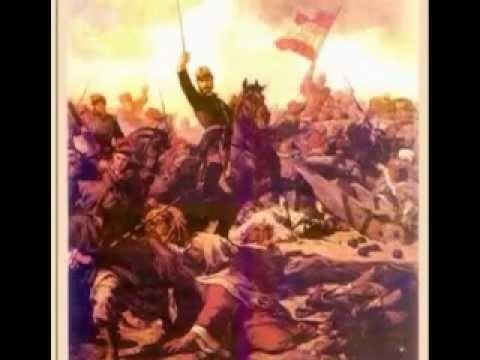Unknown Heavy | Dates 7 Nov 1808 – 9 Jul 1809 | |
 | ||
Result Spanish and British victory Location Captaincy General of Santo Domingo Combatants Captaincy General of Santo Do, France, United Kingdom, Bourbon Spain Similar Battle of Palo Hincado, Spanish reconquest of New Gr, Dominican Restoration War, Dominican War of Independence, United States occupatio | ||
The war for Spanish reestablishment in Santo Domingo, better known as the Reconquista, was fought between November 7, 1808 and July 9, 1809. In 1808, following Napoleon's invasion of Spain, the criollos of Santo Domingo revolted against French rule and their struggled culminated in 1809 with a return to the Spanish colonial rule for a period commonly termed España Boba.
Contents
Battle of Palo Hincado
The first battle took place in Palo Hincado on November 7, 1808, when Gen. Juan Sánchez Ramírez, leading an army of local and Puerto Rican soldiers, attacked by surprise a garrison of the French Army under the command of Governor Marie-Louis Ferrand, who committed suicide later after. Gen. Dubarquier heard the news and garrisoned 2000 soldiers in Santo Domingo.
The Battle for Santo Domingo
The Siege of Santo Domingo of 1808, was the second and final major battle and was fought between November 7, 1808 and July 11, 1809 at Santo Domingo, Colony of Santo Domingo. A force of Dominican and Puerto-Rican of 1850 troops led by Gen. Juan Sánchez Ramírez, with a naval blockaded by British Commander Hugh Lyle Carmichael, besieged and captured the city of Santo Domingo after an 8 months garrisoning of 2000 troops of the French Army led by General Dubarquier.
British involvement
British Major General Hugh Lyle Carmichael departed Jamaica with the 2nd West Indian, 54th, 55th, and Royal Irish regiments to aid Britain’s new found Spanish allies in reducing the isolated French garrison besieged in south-eastern Hispaniola. His convoy was escorted by Capt. William Price Cumby’s HMS Polyphemus, Aurora, Tweed, Sparrow, Thrush, Griffin, Lark, Moselle, Fleur de la Mer, and Pike. Carmichael disembarked at Palenque (50 km or 30 mi west of Santo Domingo) on 28 June, hastening ahead of his army to confer with his Spanish counterpart— General Juan Sánchez Ramírez, commander of a Puerto Rican regiment and numerous local guerrillas—who for the past eight months had been investing the 1,200-man French garrison commanded by Brig. Gen. J. Dubarquier.
Despite 400 of the 600 Spanish regulars being sick, they advanced on 30 June at Carmichael’s behest to seize San Carlos Church on the outskirts of the capital and cut off communication between Santo Domingo and Fort San Jerónimo 3 km (2 mi) west, while simultaneously securing a beach for Cumby’s supporting squadron. The demoralized French defenders had already requested an armistice and been rebuffed, repeating the suggestion on 1 July as the first British troops arrived overland (hampered by torrential rains). As negotiations progressed Carmichael maintained pressure by installing heavy siege batteries around the city and massing his forces for an assault.
French surrender
On 6 July the capitulation was finalized, Barquier pointedly surrendering to the British rather than to the Spaniards. The next day British troops occupied the city and Fort San Jerónimo, the French defenders being transported directly to Port Royal, Jamaica without loss of life on either side.
